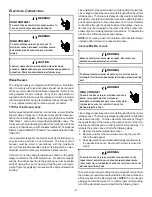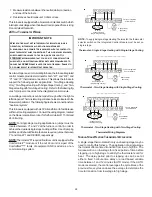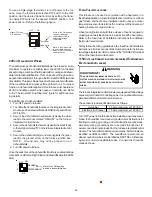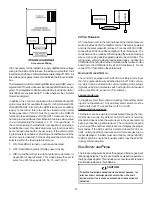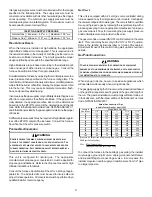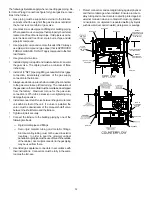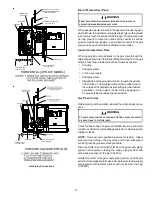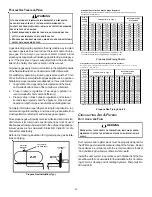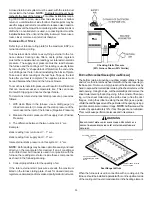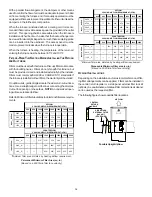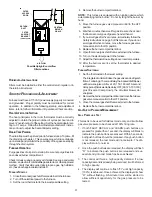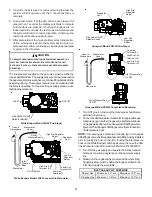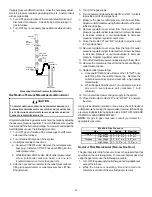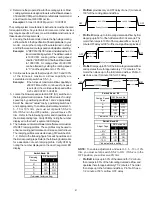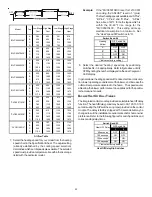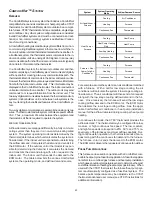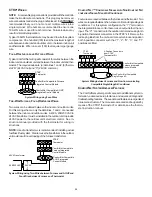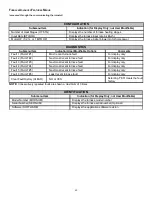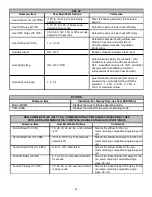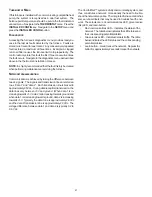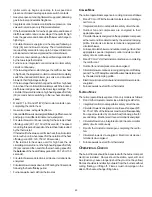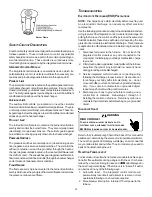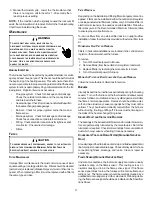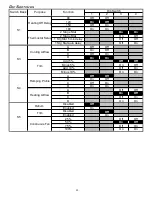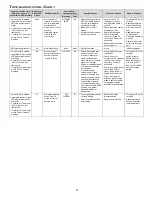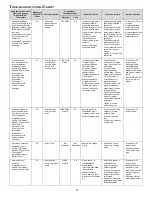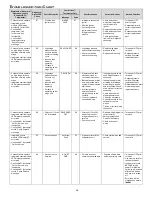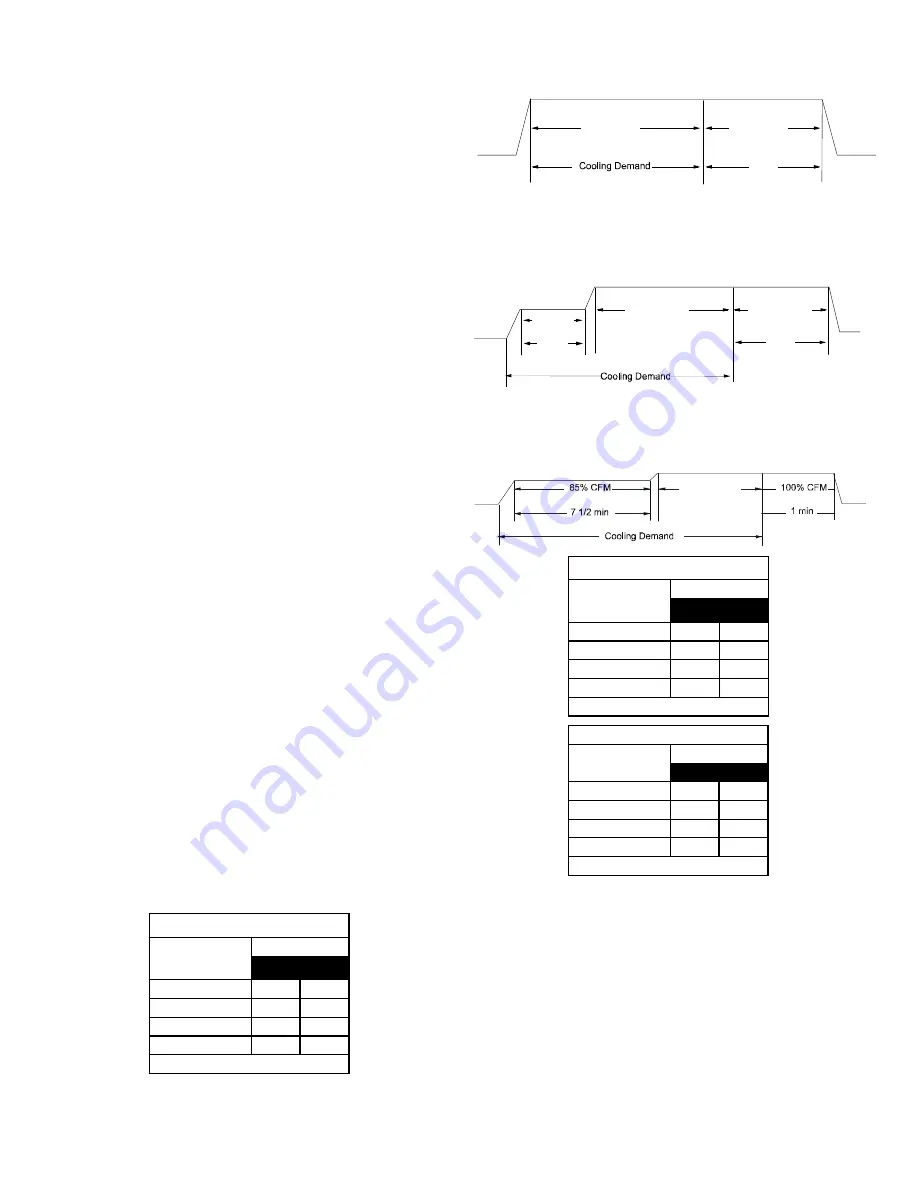
41
2. Determine the proper air flow for the cooling system. Most
cooling systems are designed to work with air flows between
350 and 450 CFM per ton. Most manufacturers recommend
an air flow of about 400 CFM per ton.
Example:
2.5 tons X 400 CFM per ton = 1000 CFM
The cooling system manufacturer’s instructions must be checked
for required air flow. Any electronic air cleaners or other devices
may require specific air flows, consult installation instructions of
those devices for requirements.
3. Knowing the furnace model, locate the high stage cooling
air flow charts in the Specification Sheet applicable to your
model. Look up the cooling air flow determined in step 2
and find the required cooling speed and adjustment setting.
Example:
A *MVC950704CX furnace installed with a 2.5
ton air conditioning system. The air flow needed
is 1000 CFM. Looking at the cooling speed
chart for *MVC95704CX, find the air flow closest
to 1000 CFM. A cooling airflow of 990 CFM
can be attained by setting the cooling speed
to “C” and the adjustment to -10% trim.
4. Continuous fan speeds that provide 25, 50, 75 and 100%
of the furnace’s maximum airflow capability are
selectable via dip switches S5- 3, 4.
Example:
If the furnace’s maximum airflow capability is
2000 CFM and 25% continuous fan speed
is selected, the continuous fan speed will be
0.25 x 2000 CFM = 500 CFM.
5. Locate the blower speed selection DIP (S3) switches on
the integrated control module. Select the desired “cooling”
speed tap by positioning switches 1 and 2 appropriately.
Select the desired “adjust” tap by positioning switches 3
and 4 appropriately. To enable adjustments and select -5,
5, -10 or 10% trim, you must set dip switch S5-2 to
ON. If S5-2 is in the OFF position , you will receive 0%
trim. Refer to the following figure for switch positions and
their corresponding taps. Verify CFM by noting the number
displayed on the dual 7-segment LED display.
6. The multi-speed circulator blower also offers several custom
ON/OFF ramping profiles. These profiles may be used to
enhance cooling performance and increase comfort level.
The ramping profiles are selected using DIP switches S4-
1, 2. Refer to the following figure for switch positions and
their corresponding taps. Refer to the following bullet points
for a description of each ramping profile. Verify CFM by
noting the number displayed on the dual 7-segment LED
display.
1
2
A*
OFF
OFF
B
ON
OFF
C
OFF
ON
D
ON
ON
Switch Bank: S4
DIP Switch No.
(*Indicates factory setting)
Ramping
Profiles
•
Profile A
provides only an OFF delay of one (1) minute at
100% of the cooling demand airflow.
OFF
100% CFM
100% CFM
1 min
OFF
•
Profile B
ramps up to full cooling demand airflow by first
stepping up to 50% of the full demand for 30 seconds. The
motor then ramps to 100% of the required airflow. A one (1)
minute OFF delay at 100% of the cooling airflow is provided.
50% CFM
1/2 min
100% CFM
100% CFM
1 min
OFF
OFF
•
Profile C
ramps up to 85% of the full cooling demand airflow
and operates there for approximately 7 1/2 minutes. The
motor then steps up to the full demand airflow. Profile C
also has a one (1) minute 100% OFF delay.
100% CFM
OFF
OFF
1
2
A
OFF
OFF
B
ON
OFF
C
OFF
ON
D*
ON
ON
Sw itch Bank : S3
Cooling Speed
Taps
DIP Sw itc h No.
(*Indic ates f actory s etting)
3
4
+ 5%*
OFF
OFF
- 5%
ON
OFF
+ 10%
OFF
ON
- 10%
ON
ON
DIP Switch No.
(*Indicates factory setting)
Switch Bank: S3
Adjust Taps
NOTE:
To enable adjustments and select -5, 5, -10 or 10%
trim, you must set dip switch S5-2 to ON. If S5-2 is in the
OFF position, you will receive 0% trim.
•
Profile D
ramps up to 50% of the demand for 1/2 minute,
then ramps to 85% of the full cooling demand airflow and
operates there for approximately 7 1/2 minutes. The motor
then steps up to the full demand airflow. Profile D has a
1/2 minute at 50% airflow OFF delay.

